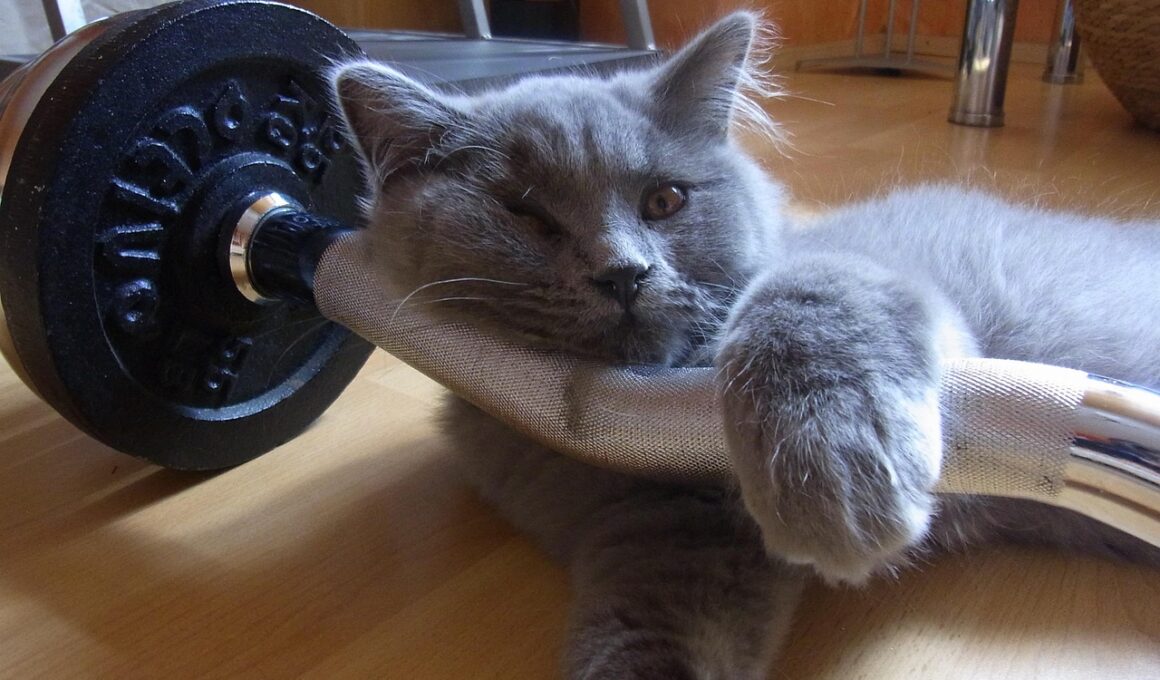Using Target Training to Enhance Cat Behavior
Target training is a fundamentally useful method for improving your cat’s behavior and guiding them towards positive actions. By leveraging their natural instincts and curiosity, you can teach your cat to respond to specific cues. This technique involves using a target, such as your hand or a stick with a ball at the end, to direct your cat’s attention. Start by getting your cat familiar with the target, rewarding them when they touch or follow it. This creates a positive association with the target. Utilize rewards like treats, praise, or playtime to encourage them further. Be patient as each cat learns at their own pace and their response can vary greatly. Consistency in your training sessions is important, as it reinforces the learned behaviors effectively. Consider the environment you train in, ensuring it’s free from distractions. Scheduling short sessions, approximately five to ten minutes, helps maintain your cat’s focus. As they become more accustomed to the target, you can increase the complexity of tasks. This way, your cat’s focus, and ability to follow commands can be significantly enhanced, leading to an enriching experience for both cats and owners.
Additionally, incorporating clicker training alongside target training can produce highly effective results. Clicker training serves as a marker of correct behavior, reinforcing the desired action immediately. When your cat successfully touches the target, immediately click the clicker to signify that they did something right. Follow up with a treat to solidify this behavior, creating a stronger connection between the action and the reward. Timing is crucial in this training method; the quicker the reward follows the positive behavior, the better your cat will learn. For effective progression, ensure you break down complex tasks into manageable steps. Always start with basic commands and gradually build up to more advanced tricks. Consistency this way not only helps your cat understand what’s expected but also maintains their interest in the training process. You can also vary the targets to keep training exciting. Use different colors or shapes that can spark your cat’s interest. Each time they engage positively, ensure to offer a reward. This strategy keeps your sessions fun, varied, and fascinating for your feline friend. Over time, you will notice a marked improvement in your cat’s responsiveness and behavior.
Building Focus and Attention Span
One of the prevalent benefits of target training is its ability to build your cat’s focus and attention span. Through this technique, you can teach them to concentrate on specific tasks rather than getting distracted by their surroundings. A focused cat is more likely to learn better and follow commands effectively. Begin the training process in a quiet place with minimal distractions, allowing your cat to engage fully with the target. Resetting their attention is an effective technique if they get distracted. Use gentle prompting to redirect them back to the target without causing frustration. As they become more adept at following the target, gradually introduce elements of distraction to test their focus. Training amidst mild distractions reinforces their concentration abilities. Repeat tasks consistently, while rewarding them for every successful touch or interaction with the target. Increasing the challenge over time can further enhance their attention span. Cats often thrive on variety and challenges, so incorporating obstacles or varying the reward system may create a fun learning environment. Gradually, you will see noticeable improvements in their focus, along with their willingness to participate more eagerly in training.
Moreover, it’s essential to recognize that training is a two-way communication process. Establishing trust with your cat will significantly enhance their willingness to engage during training sessions. Approach each session with patience, understanding, and a lighthearted attitude to develop this bond. Use encouraging words and a soft tone of voice to make your cat feel safe and secure. An important part of this bonding process is observing your cat’s body language. Understanding their signals will help you adjust training accordingly. For instance, if they seem disinterested, consider shortening the session or switching targets. Always end training sessions positively, even if progress was minimal. Finish with a reward or playtime, creating a positive association with the experience. Cats have personal boundaries, which, if respected, create a lasting relationship built on trust. Incorporating fun into training through play can also bolster that bond. Successful interactions will increase your cat’s motivation to learn next time. Target training, paired with enriched environments, transforms your cat’s behavior, leading to a happy and well-adjusted companion. By enhancing your connection, both you and your cat will benefit from the learning experience.
Implementing Training in Daily Life
Incorporating target training into your daily routine can be beneficial for your cat’s behavior. You don’t have to set aside dedicated training times; instead, use natural moments throughout the day. For example, when you feed your cat, engage them by placing the target nearby. Encourage them to touch the target as they approach their food bowl. Associating training with routine activities can normalize the process and deepen their engagement. Gradually, they’ll connect positive actions with rewards, strengthening their motivation to participate. Use everyday items around your home as targets to keep things interesting. A stick, a piece of paper or even a spoon can work effectively. Mixing the targets also serves to enhance their learning experience. Be creative in your approach, allowing tasks to evolve with their growth. You can also invite family members to participate to create a group learning experience, increasing social interactions. Trying different environments or locations for training keeps routines lively. Rotate locations and add variations to prevent monotony, keeping training fresh and engaging. This adaptability ensures that your cat remains consistently stimulated, reinforcing their learning progress.
Another key factor in successful target training is understanding the unique personality traits of your cat. Every cat has different learning styles and temperaments, which influences their training responses. Some cats may be more eager to please, while others might require more time and encouragement. Adjusting your approach based on their personality can lead to more fruitful training sessions. For example, a shy cat may need gentle encouragement and positive reinforcement, while a more adventurous kitty might respond well to playful challenges. Pay attention to their reactions, modifying your techniques to fit their needs. This individualized understanding creates a more effective learning environment. Remember to track your cat’s progress through simple notes or milestones to appreciate improvements over time. Note dates of successful touches or new tricks learned, celebrating each small victory. Creating specific goals can keep you motivated and focused. Share your journey with others, discussing training challenges, tips, or breakthroughs to foster a community spirit. Engaging with fellow cat enthusiasts provides support and alternative ideas. Celebrate your training journey by rewarding your cat’s growth, ensuring a robust and positive relationship moves forward.
Conclusion
In conclusion, target training presents a delightful and constructive approach to enhancing your cat’s behavior. By harnessing their natural instincts, you can develop a rewarding training program that not only improves their actions but also fosters a stronger connection between you and your pet. Patience, consistency, understanding, and creativity play vital roles in this training method. Focus on enriching the process for both you and your cat. Gradually increase complexity as your cat learns, ensuring to integrate training into daily life, thereby normalizing it. Utilizing clicker techniques can amplify the effectiveness of the training, facilitating a more structured reward system. Always pay attention to their unique personality traits to tailor your methods, ensuring better learning outcomes. Celebrate successes, no matter how small, to maintain enthusiasm and motivation in your cat. By creating a fun atmosphere, you can turn training into a joyous experience that both of you look forward to. With dedication, the improvements you’ll witness in your cat’s behavior will be gratifying. Ultimately, the bond you build will lead to a happier, healthier, and more well-behaved feline companion.


